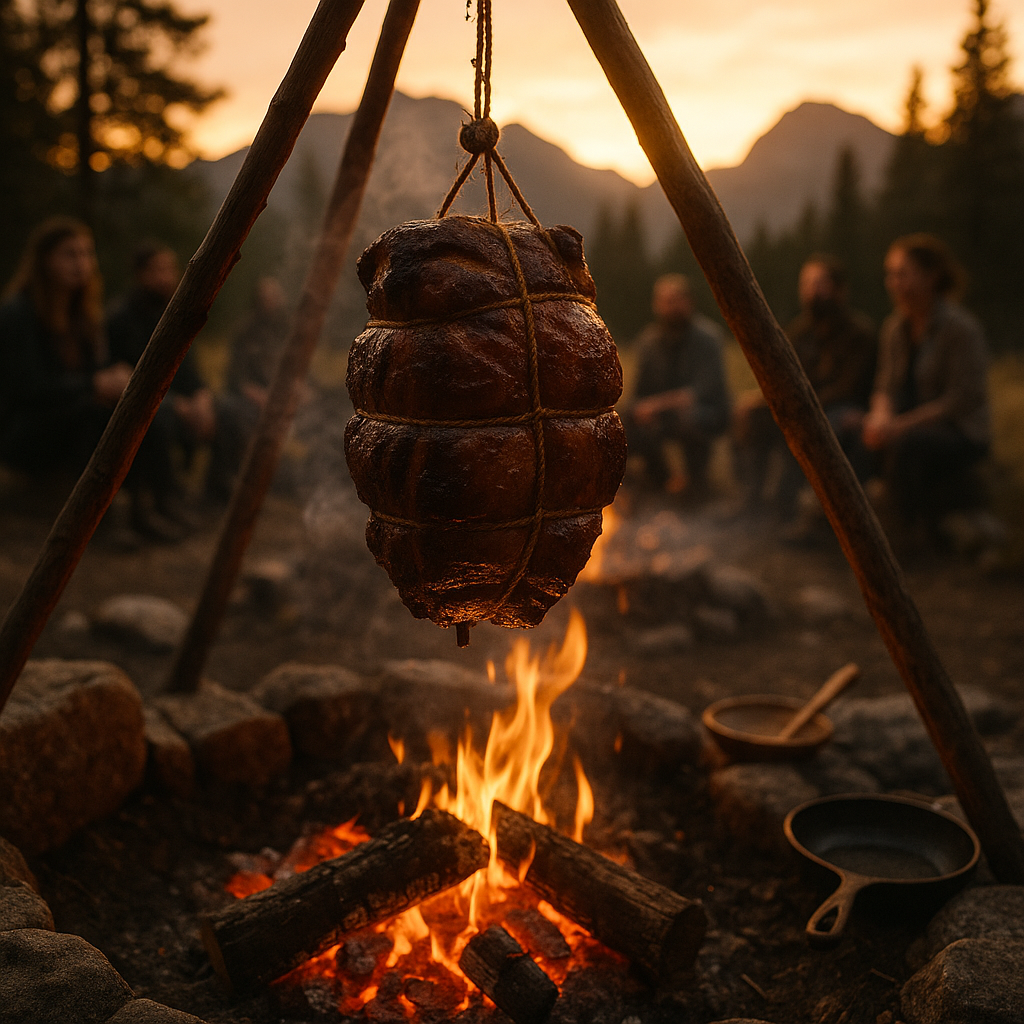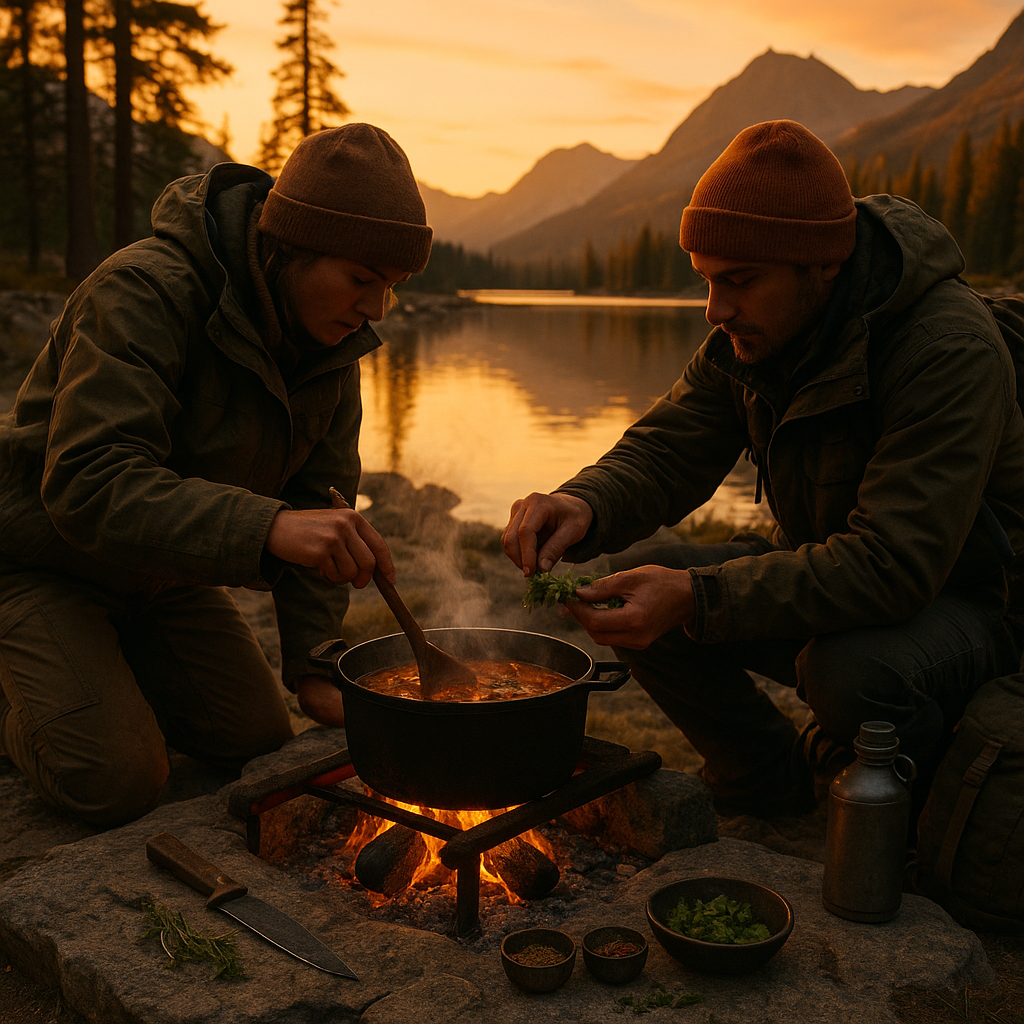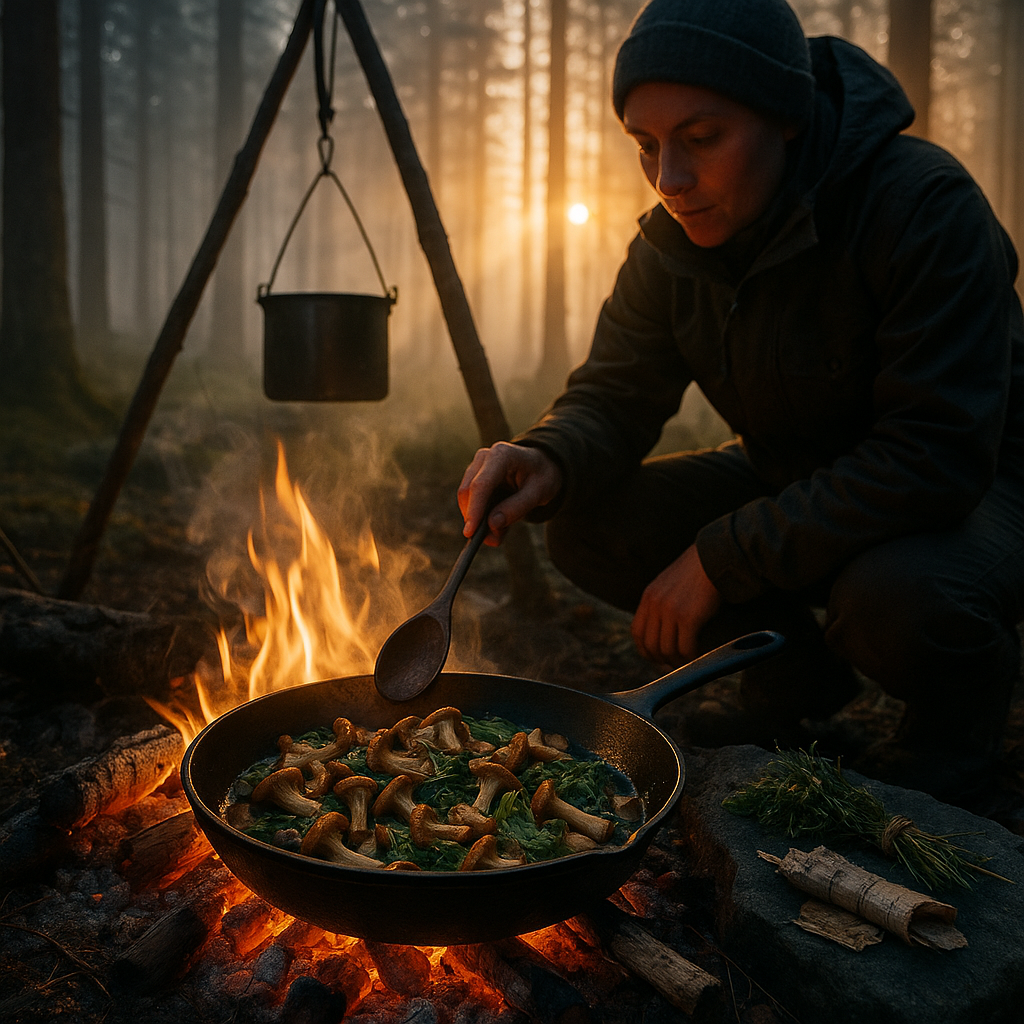Key Takeaways
- Ancient techniques connect skill to mindfulness. Traditional bread-making on an open fire draws you into deliberate, thoughtful movements, creating a deep link between your hands, the earth, and the vibrant presence of flame.
- Location transforms bread into spiritual nourishment. Setting your sights on the mountains, you find that silence, grandeur, and natural beauty elevate the simple act of baking, infusing it with a meditative, almost sacred energy.
- Fire mastery unlocks the art of outdoor baking. Achieving and maintaining a steady fire temperature is crucial for baking success and hinges on careful wood selection and attentive, responsive tending.
- Altitude shapes both process and patience. High-altitude environments impact every stage of dough preparation, urging bakers to adapt recipes, slow their pace, and respect the mountain’s influence on their craft.
- Essential tools simplify wilderness preparation. Minimal but purposeful tools, like a cast-iron pan, sturdy baking stones, and locally sourced ingredients, embody the elegant simplicity of mountain cooking.
- Environmental stewardship is part of the ritual. Practicing Leave No Trace principles is a mark of respect for the landscape, ensuring that only footprints and gratitude remain.
- The ritual revives ancestral wisdom in the wild. Baking bread outdoors is a pure sensory experience, linking sight, smell, and touch to the eternal rhythms of the natural world and reviving traditions passed hand to hand through the ages.
This primal yet sophisticated journey elevates mountain bread baking into an act of craftsmanship and mindfulness. In the following sections, we’ll explore the meticulous fire-building techniques, essential tools, high-altitude adaptations, and spiritual dimensions that make this ancient practice so unforgettable.
Introduction
Smoke curls upward, weaving through the still mountain air while the fire’s crackle accompanies an ancient culinary ritual. Each motion, turning dough, feeding flames, or waiting for the rise, is a living echo of traditions shaped by centuries of hands and hearts. In these high places, surrounded by quiet peaks and open sky, every loaf tells a story far older than memory.
Baking bread on an open fire in the mountains is more than rustic cooking. It’s an act of intention and reverence, where simple ingredients become sustenance for body and soul. Here, the unpredictable demands of altitude, the complexity of fire, and the patience required by wilderness invite you to slow down, to bake with purpose, and to form a lasting relationship with the land. Together, we’ll discover how wilderness bread baking is both an homage to ancestral knowledge and a meditation on the enduring connection between place, process, and spirit.
Finding Your Sacred Space: The Mountain Kitchen
The journey begins with a sense of place. Making bread in the mountains means choosing more than just a level surface; it is about tuning in to nature’s architecture and letting the landscape guide your hand. The interplay of sunlight, rock, and wind can turn any quiet mountain alcove into a sanctified kitchen.
Stay Sharp. Stay Ahead.
Join our Telegram Channel for exclusive content, real insights,
engage with us and other members and get access to
insider updates, early news and top insights.
 Join the Channel
Join the Channel
When choosing your outdoor baking site, consider the following:
- Seek partial shelter from wind without enclosing yourself entirely; natural rock formations often provide the perfect compromise.
- Ensure the ground is stable and level enough for your fire pit and any equipment.
- look for proximity to fresh water, a silent companion for both baking and cleaning.
- Maintain a respectful distance from overhanging branches to reduce fire risk.
- Use rocky or gravelly terrain; these surfaces can help hold and reflect heat, further transforming your chosen spot into a natural oven.
Your mountain kitchen is as much a state of mind as it is a physical location. Treat the site with gratitude, and allow the elements to become your partners in the ritual ahead.
The Alchemy of Fire and Flour
Bread-making in the wild hinges on the alchemy between basic ingredients and the living presence of fire. Unlike the predictable modern oven, an open fire demands sensitive attention, an intuitive feel for heat, and a willingness to adapt. Building the right fire is the first brick in your stone oven of tradition.
Fire Building Techniques
Converting raw flame into dependable heat is an art in itself, blending patience, skill, and an understanding of your environment. Start with small, dry kindling, pine needles, twigs, or bark, feeding the fire with deliberate care before layering on harder woods that will yield a dense, glowing coal bed.
Key fire management steps for wilderness baking:
- Nurture your fire for a minimum of 45 minutes before introducing bread, allowing time to cultivate a bed of even, enduring coals.
- Create different temperature zones by shifting coals and arranging logs at varying distances.
- Form a star-shaped pattern with larger logs to ensure sustained coal generation and manageable heat fluctuation.
- Pay attention to changing wind; adjust fire structure or position for even, steady performance.
It’s at this intersection of heat and patience that the boundary blurs between baker and environment, where sensing the fire’s breath becomes intuitive.
The Sacred Dance of Dough at Altitude
At elevation, every step in bread-making is transformed by the thin mountain air. The dough is more sensitive, the window between under-proofed and over-proofed is shortened, and both moisture and temperature play unpredictable roles. For both seasoned bakers and adventurers, this creates a landscape rich with learning.
Altitude Adjustments
The air’s lower pressure at high altitude affects fermentation and hydration. Embracing this challenge means making small yet meaningful adjustments to your process:
- Decrease yeast content by about 25 percent to keep rises slow and controlled.
- Add 2 to 4 extra tablespoons of liquid for each cup of flour, compensating for rapid moisture loss.
- Extend kneading time by 2 to 3 minutes, coaxing gluten strength from the dough.
- Watch for quicker proofing times and trust your hands as much as your timer; a dough’s readiness is felt, not just read.
Approach each step as a conversation with the mountain, adjusting and responding in kind.
Tools and Vessels of the Mountain Baker
A mountain baker’s kit balances the wisdom of ages with the realities of wilderness travel. Each item is selected both for its heritage and its adaptability, reflecting a respect for minimalism and resourcefulness.
Foundational tools include:
- A cast iron Dutch oven with sturdy legs, transforming coals into a reliable hearth even on uneven ground.
- Heavy-duty gloves for tending the fire and handling hot vessels, reinforcing the primal, hands-on connection to your craft.
- Long-handled tongs or pokers for safely managing coals and logs.
- A natural fiber cloth for proofing dough, protecting it from wind and insects while honoring tradition.
- Flat baking stones, scavenged or brought along, which create a more even heat surface for crisp, savory crusts.
Traditional Methods Meet Modern Wisdom
While your ancestors might have relied solely on what the land provided, today’s mountain bakers can draw from both old and new, using a Dutch oven as a portable stone hearth or integrating reusable, eco-friendly materials. This marriage of respect and practical evolution is its own act of creativity, keeping the spirit of the ritual alive.
The Meditative Practice of Mountain Bread
The true art of mountain bread making occurs in the silent harmony between movement, landscape, and breath. As you knead, shape, and wait, time slows to a rhythm dictated by the crackling fire, the hush of wind, and the scent of earth and flour mingling in the air.
Mindful Techniques
- Pay attention to the dough’s evolution, how it changes texture under your hands, becoming more supple and alive.
- Match your breathing to the cadence of kneading, creating a flow between body and work.
- Sense the dough’s readiness through touch and gentle pressure, learning to trust your instincts.
- Embrace the mountain silence, letting it shape your pace and deepen your focus.
This immersive presence brings the senses alive, replacing distraction with grounded connection and uniting the act of baking with the spirit of place.
Fire Management as Spiritual Practice
Managing the bread fire in the mountains becomes an ongoing meditation. Each adjustment is a lesson in attunement, requiring you to observe, adapt, and learn from the subtle signals around you.
As you tend the flames, become attuned to:
Stay Sharp. Stay Ahead.
Join our Telegram Channel for exclusive content, real insights,
engage with us and other members and get access to
insider updates, early news and top insights.
 Join the Channel
Join the Channel
- The distinct colors, from deep red coals to flickering blue flames, that signal different heat levels.
- The changing soundscape, the gentle sigh of embers or sudden pops signaling wood type and moisture content.
- The graceful movements of smoke as it coils and disperses, revealing wind direction and fire health.
- The tactile sense of radiant heat at varying distances, guiding you as you position bread and tools.
Passed hand to hand through history, these nuances create a silent dialogue between fire





Leave a Reply